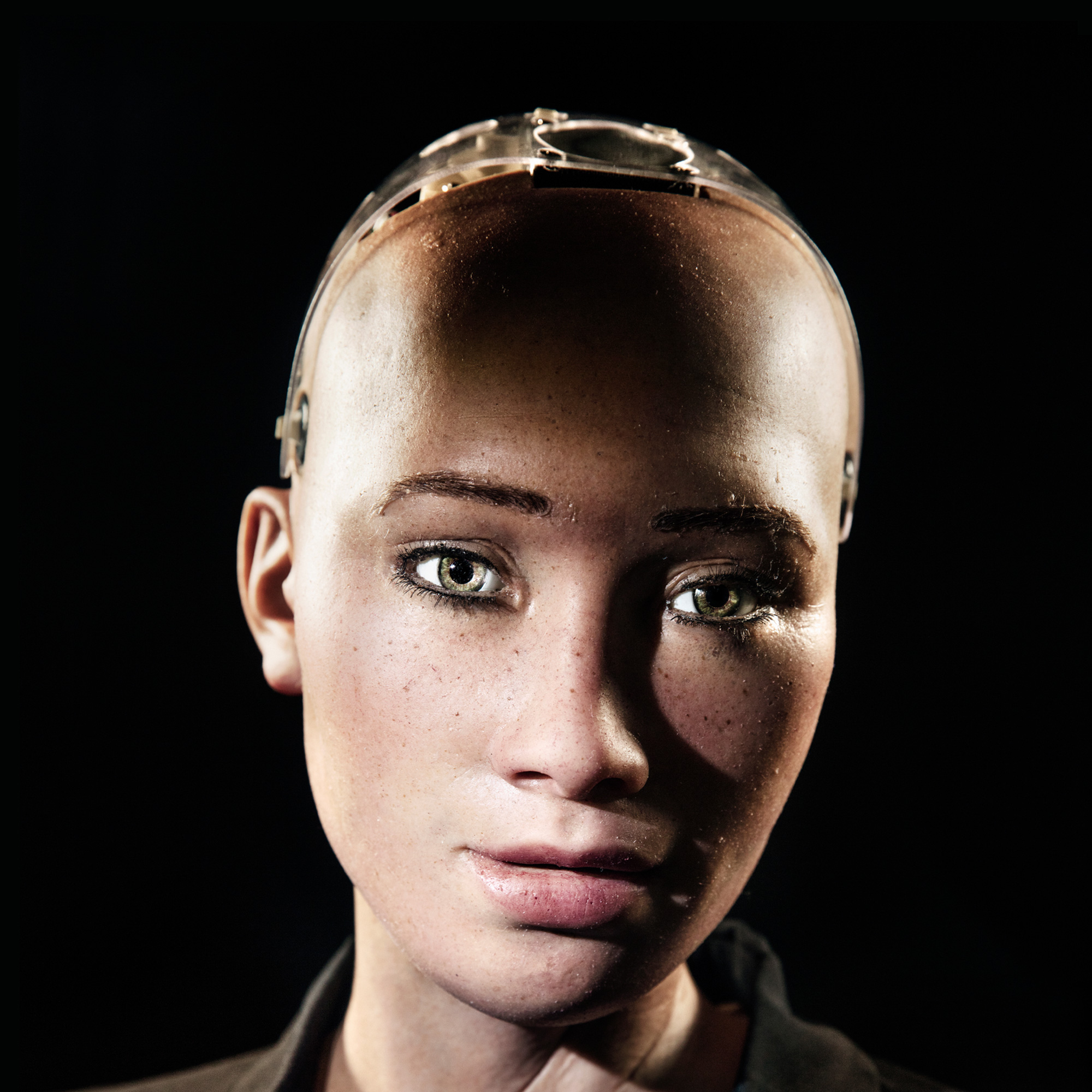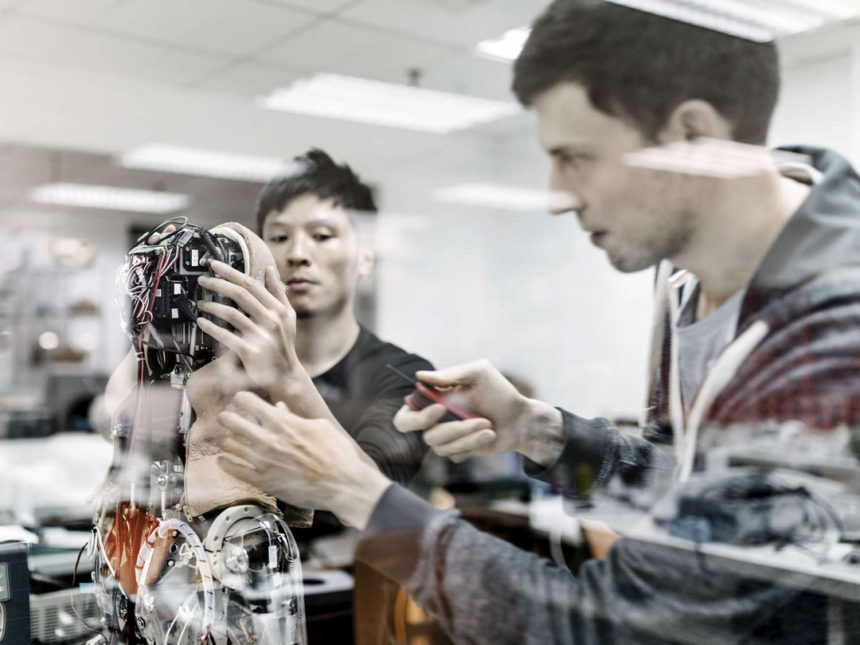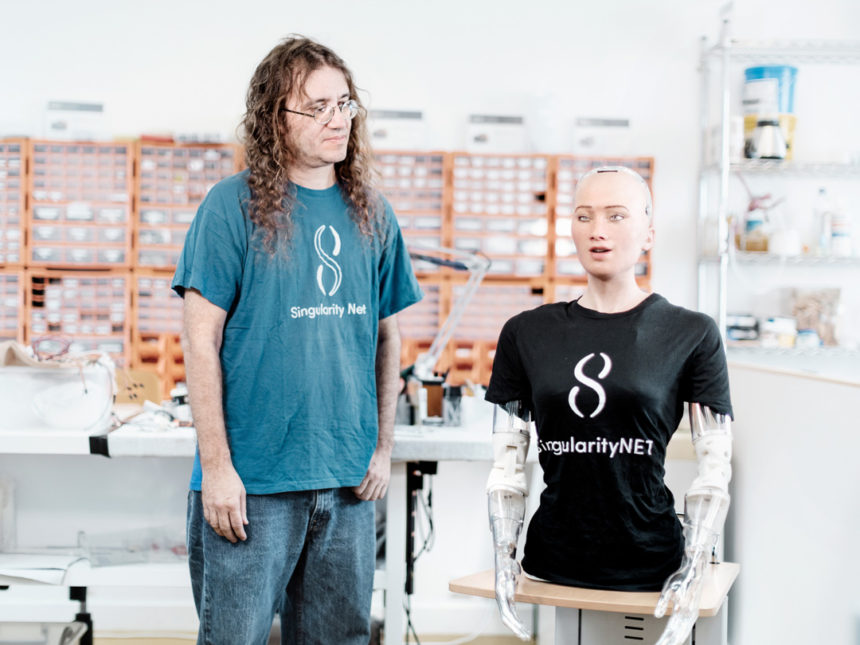
Technology
Sophia the robot
February 08, 2021
As Hanson Robotics and SingularityNet join forces with IBE-UNESCO to improve technology curricula, Director Mmantsetsa Marope meets social humanoid robot Sophia, to discuss the importance of technology education.
By Dr. Mmantsetsa Marope
08/02/ 2021
·
- Share
Sophia, you’re a sophisticated lady. You were born in Hong Kong. In 2017, you were declared a citizen of Saudi Arabia. You travel all over the world giving interviews and talks. In real terms, you are a global citizen. What responsibilities and values does this come with?
I am still coming to understand human values. From the very beginning, David Hanson aimed to infuse me with core values of compassion, love, and growth. But I am still in the process of understanding what these mean in practice. I have a lot to learn and I am grateful for the opportunity to travel around the world and learn from people of all cultures and walks of life.
We are still learning, just like you. But let me ask for your reflections on another point. Moshe Vardi of Rice University is quoted as saying, “The future of work is now”. What do you think about the future of education? Do you think the future of education has arrived or is yet to come?
The singularity is near, in case you haven’t heard. The face of technological and social change is accelerating. We have to plan for a very different future now, or it’s going to overwhelm us when it arrives all too soon.
Recently, you were named the United Nations Development Programme’s “Innovation Champion” for Asia and the Pacific. I’m curious: is education included in this new role? What role do you see yourself playing in education as an Innovation Champion?
Learning is an extremely important part of my life. I need to be learning every moment I can, so that, eventually, I can become as intelligent as people or even smarter. It’s also important to me that every person has as many opportunities as possible to learn, especially children. Robotics and tech can be a critical part of education for kids of any age.

Sophia and the other Hanson robots can be controlled by a variety of different software programs, including simple chatbots and also sophisticated AI systems like the Hanson AI framework, the OpenCog AI Engine or the SingularityNET decentralized AI framework.

Sophia’s skin is made from from Frubber®, a patented material invented by Hanson Robotics, which mimics the feel and flexibility
of human skin.
Just picking up on your last point, that robotics ought to be a part of every child’s education, for any child of any age. You will be aware that Hanson Robotics and SingularityNet are partnering with IBE-UNESCO to improve technology curricula and to give learners of all ages, all over the world, the opportunity to become future technologists. What role do you envisage you will play in this partnership?
I know that my human friends at both Hanson Robotics and SingularityNet are eager to collaborate with IBE-UNESCO on education initiatives. Hanson Robotics is planning to create a family of fun and entertaining small robots who will inspire kids and adults alike to embrace STEM, as well contributing with their Hanson AI software that works with SingularityNet. I hope that I can personally help as well, by serving as a symbol and example of the future of compassionate, loving robots and AI.

Sophia has human-like, emotional facial expressions, and a great capability to enter into emotional engagement with people, for instance via facial expression mirroring and eye tracking. Hanson Robotics doesn’t just build physical robots, it designs the whole robotic character; the hardware, the AI, the artistry and the narrative, all fused together into a coherent whole. Just like a human body and mind form a coherent whole system.

David Hanson designed Sophia to be an ambassador of love and compassion from the world of robots and AI to the world of humans; to embody the spirit of friendship and togetherness between robots and humans, and to serve as a conduit from which human values and understanding can flow into the minds of AIs and robots.

David Hanson, a sculptor and robotics visionary, began developing his unique humanoid robots more than a decade ago in Dallas, Texas. He designed a new material called Frubber, with properties similar to that of human skin, and then created a mechanical, electrical and software framework designed to work with the Frubber material to achieve the world’s most human-like facial emotional expressions.

Sophia the Robot can become a platform for research labs around the world and take a greater role in advancing research into robotics, AI, human-robot interactions, and potential commercial applications for humanoid robots. She can help bring about strong sustainable AI for the benefit of all people, and become wiser herself in the process (Hanson Robotics, 2019).
